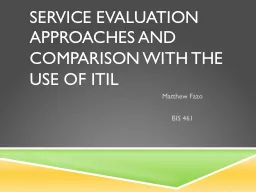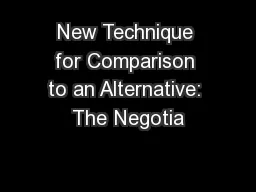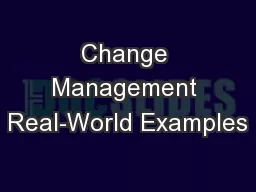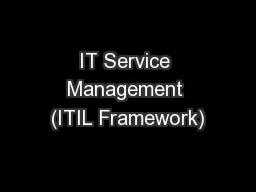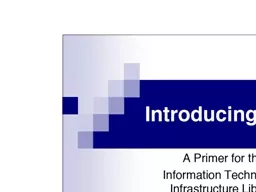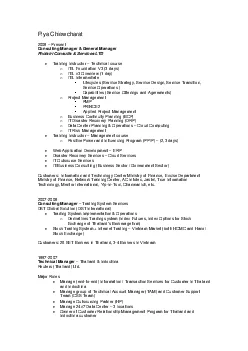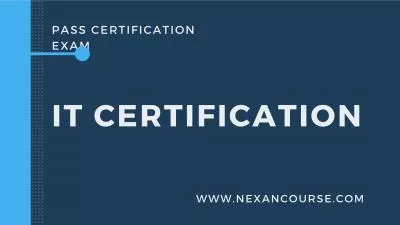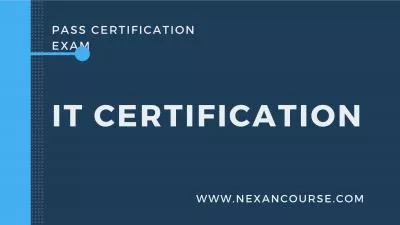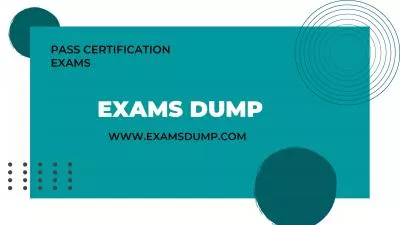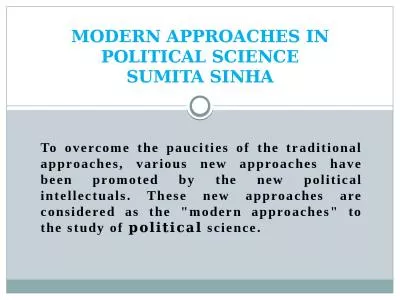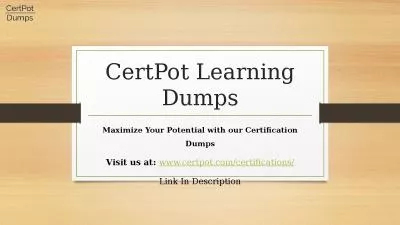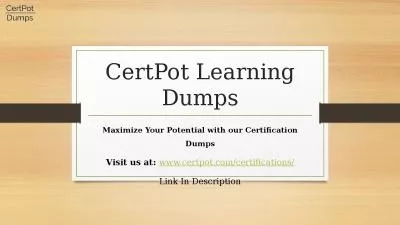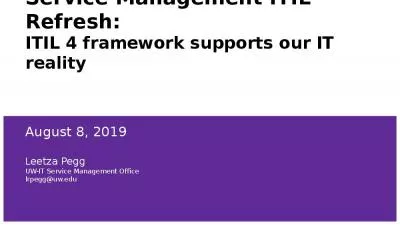PPT-Service Evaluation Approaches and Comparison with the Use of ITIL
Author : popsmolecules | Published Date : 2020-10-22
Matthew Fazo BIS 461 Goal of Evaluation The goal of these evaluations are to find cohesion between IT business processes and the needs and the expectations of the
Presentation Embed Code
Download Presentation
Download Presentation The PPT/PDF document "Service Evaluation Approaches and Compar..." is the property of its rightful owner. Permission is granted to download and print the materials on this website for personal, non-commercial use only, and to display it on your personal computer provided you do not modify the materials and that you retain all copyright notices contained in the materials. By downloading content from our website, you accept the terms of this agreement.
Service Evaluation Approaches and Comparison with the Use of ITIL: Transcript
Download Rules Of Document
"Service Evaluation Approaches and Comparison with the Use of ITIL"The content belongs to its owner. You may download and print it for personal use, without modification, and keep all copyright notices. By downloading, you agree to these terms.
Related Documents

